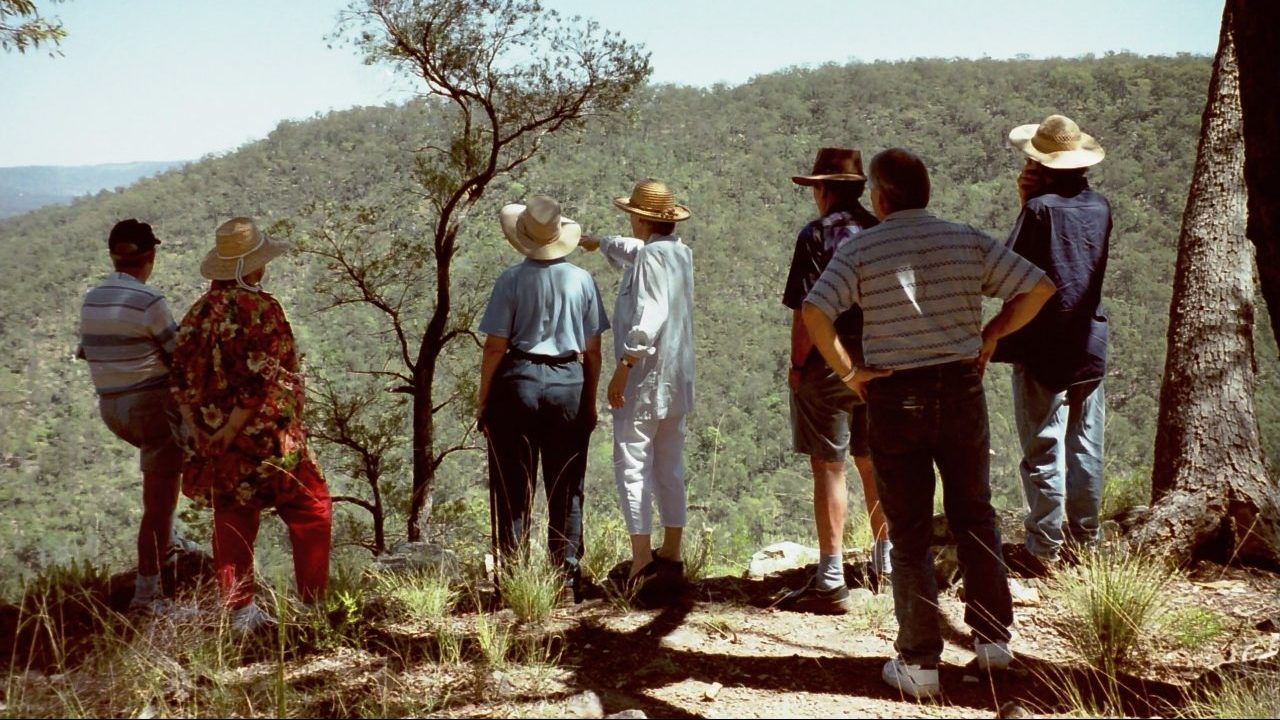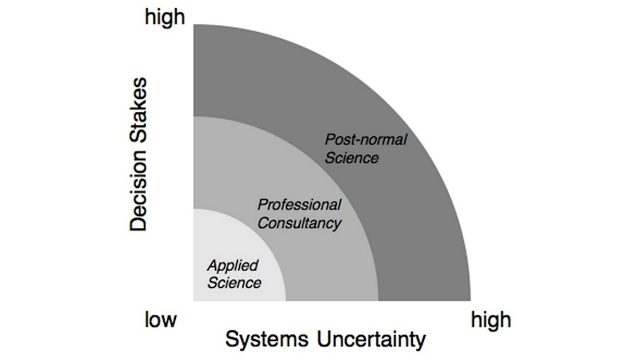
Case studies in complexityFeatured StoriesStakeholder and community engagementSystems & complexity
Case studies in complexity (part 7): Problem-solving communication skills and lateral thinking in the Helidon Hills
This article is part 7 of a series featuring case studies in complexity from the work of RealKM Magazine’s Bruce Boyes.
Background
- Sustainable Management of the Helidon Hills project. In part 6 of this RealKM Magazine series, I discuss the 1998-1999 Sustainable Management of the Helidon Hills project1 as an example of how tacit knowledge engagement and deliberative conversations can be used to facilitate ways forward in the face of complexity.
- Stakeholder resistance and denial. As I discuss in part 6, some stakeholders expressed strong opposition to the Helidon Hills project2 in its early stages, and this was symptomatic of community disenchantment with mainstream government in the wider area and in some other parts of Australia at the time. There was also denial by some stakeholders of the negative impacts of a range of land use activities on the significant natural values of the area. To achieve the successful implementation3 of the Sustainable Management of the Helidon Hills project, I needed to overcome this stakeholder resistance and denial in the relatively short time of just a few months.
Why it’s complex
- Multi-layered with complex interactions and inter-dependencies. We could think that stakeholder resistance and denial is simply because they are “reacting against our project or initiative.” But this thinking considers our project or initiative to be one-dimensional and linear, when in reality it is multi-layered with complex interactions and inter-dependencies between the layers. In the case of the Helidon Hills project, the simple statement “sustainable management” presents a complex situation to stakeholders.
- The example of private landholders. For example, just looking at the situation of private landholders (among the wide range of stakeholders), the issues they are confronted with in regard to sustainable management include: Does my land have significant natural values? If it does, how do I deal with these values? Will they prevent me from doing other things on my land, and will this impact on my livelihood? Will governments just impose rules and regulations on me? Or could they even resume my land and turn it into a national park? How will this affect my family and community, now and into the future? Will a decision that seems right at the present time end up being wrong in the future in a world of constant change? Do my neighbours share my views, or do they have very different ideas about how to use and manage their properties? Or, will they criticise me for the way I want to use and manage my property? What if I have compatible neighbours now, but in the future, their properties change hands to people with very different views? How will increased extreme weather due to climate change affect my property? How do I deal with the feral animals and environmental weeds that are progressively invading the area? When my children inherit my property in the future, will they think about things the same way I do? And so on…
Approach
- Two effective approaches. To overcome stakeholder resistance and denial, I have long used two approaches that I learnt over 30 years ago: problem-solving communication skills and lateral thinking.
- Problem-solving communication skills. The three aspects of problem-solving communication skills have been identified by Bob Dick as “expressive skills for stating a point of view non-defensively; listening skills for learning another’s point of view; and process skills for managing the overall interaction.” He summarises these skills4 as part of his action learning resources. Further detail can be found in his unfortunately now long out-of-print book Learning to communicate5 which was the workbook for his subject that I completed at The University of Queensland in 1991. Through the application of problem-solving communication skills, knowledge can be successfully communicated to stakeholders in an effective and non-threatening way, and emotion can be overcome to gain an accurate understanding of the perspectives and issues of concern of stakeholders (such as those listed above). This greatly reduces stakeholder resistance and denial. Problem-solving communication skills were used in the tacit knowledge transfer and deliberative conversations steps of the Sustainable Management of the Helidon Hills project, as described in part 6 of this series.
- Lateral thinking and “win-win” outcomes. I first experienced the effectiveness of the lateral thinking approach in the Ipswich Heritage Program, which is discussed in part 2 of this series. The term “lateral thinking” was coined by Edward de Bono6 in 1967, and can be defined7 as “a way of solving a problem by thinking about it in a different and original way and not using traditional or expected methods.” Too often, the proponents of an initiative or a project and their stakeholders will become locked in a battle between option A and option B, when through the application of lateral thinking an option C could be identified that addresses everyone’s concerns. Note that option C isn’t a compromise solution between options A and B, where both sides suffer some degree of loss. Rather, option C is a new, creative and innovative solution that addresses everyone’s issues, so I often describe it as a “win-win” outcome. This greatly reduces stakeholder resistance and denial. Lateral thinking was used in the deliberative conversations step of the Sustainable Management of the Helidon Hills project, as described in part 6 of this series.
Outcomes
- Problem-solving communication skills outcomes. Problem-solving communication skills greatly assisted the tacit knowledge transfer and deliberative conversations steps of the Sustainable Management of the Helidon Hills project, as described in part 6 of this series.
- Lateral thinking outcomes. Two examples of lateral thinking outcomes in the Helidon Hills are the establishment of environmental tourism enterprises and working with the Australian Rainforest Conservation Society (ARCS) to establish the Centre for Native Floriculture at the nearby University of Queensland Gatton Campus.
- Environmental tourism as a win-win outcome. Environmental tourism enables landholders to derive an income from their property through a land use that is sympathetic to, rather than competing with, the natural values of their property. Option A was to impose conservation measures on landholders without any consideration of livelihood, while option B was to do nothing to address land uses that were incompatible with the natural values of the area. Option C, environmental tourism in the Helidon Hills8, addresses both livelihood and the conservation of natural values.
- Native floriculture as a win-win outcome. The wild harvesting of native flora was one of a number of activities identified as having a detrimental impact on the natural values of the Helidon Hills. Option A was to ban wild harvesting, or to at least try to regulate it with measures that would have been very difficult to monitor and enforce in such a large area of forest with rugged terrain. Option B was to allow the impacting practice of wild harvesting to continue. However, option C was to look at bringing wild plants into cultivation, which was already an emerging enterprise in the area9. To advance this, I worked with Dr. Aila Keto of the Australian Rainforest Conservation Society (ARCS) to secure funding for the Centre for Native Floriculture10 at the University of Queensland Gatton Campus as part of the South East Queensland Forest Agreement (SEQFA). The SEQFA addressed the conservation of the natural values of the state forests in the Helidon Hills, and as it was being negotiated at the same time as the Helidon Hills project I established links between the two initiatives.
Lessons
- Repeatedly effective. In my work, problem-solving communication skills and lateral thinking have repeatedly proven to be effective in addressing stakeholder resistance and denial. Further examples will be the subject of future articles in this series, for example, the win-win solutions achieved through the Gatton Shire Biodiversity Strategy11.
Editor’s note: This article was first published on 6 January 2016 as “Case Study: How to overcome resistance and denial when engaging stakeholders.” It has been revised and updated for inclusion in the case studies in complexity series.
Header image source: Knowledge sharing in the Helidon Hills. © Bruce Boyes, CC BY-SA 4.0.
References:
- Boyes B., Pope, S., & Mortimer, M. (1999). Sustainable Management of the Helidon Hills Draft Management Plan December 1999, as amended by Sharon Boyle & Associates under direction of the Interim Management Group. Ipswich Queensland: Western Subregional Organisation of Councils (WESROC). ↩
- Toowoomba Chronicle. (1998). Tension at Helidon meeting. Toowoomba Chronicle. ↩
- Gatton, Lockyer and Brisbane Valley Star. (1999). Helidon Hills project co-ordinator ‘unties cord’. Gatton, Lockyer and Brisbane Valley Star. ↩
- Dick, B. (1997). Communication skills. Resource papers in action research. ↩
- Dick, R. (1986). Learning to communicate: Activities, skills, techniques, models. Interchange and University of Queensland Bookshop. ↩
- de Bono, E. (2016). Lateral Thinking. Dr. Edward de Bono. ↩
- Cambridge Dictionary. ↩
- Hammond, P. (2000, March 24). Hidden Valley. The Courier Mail. ↩
- The University of Queensland. (2004, March 5). New opportunities arranged for native flower growers. UQ News. ↩
- The University of Queensland. (2003, May 30). Native flower research blooms at Gatton. UQ News. ↩
- Boyes, B. (2000). Gatton Shire Biodiversity Strategy. Forest Hill: Lockyer Watershed Management Association (LWMA) Inc.- Lockyer Landcare Group. ↩
Also published on Medium.





